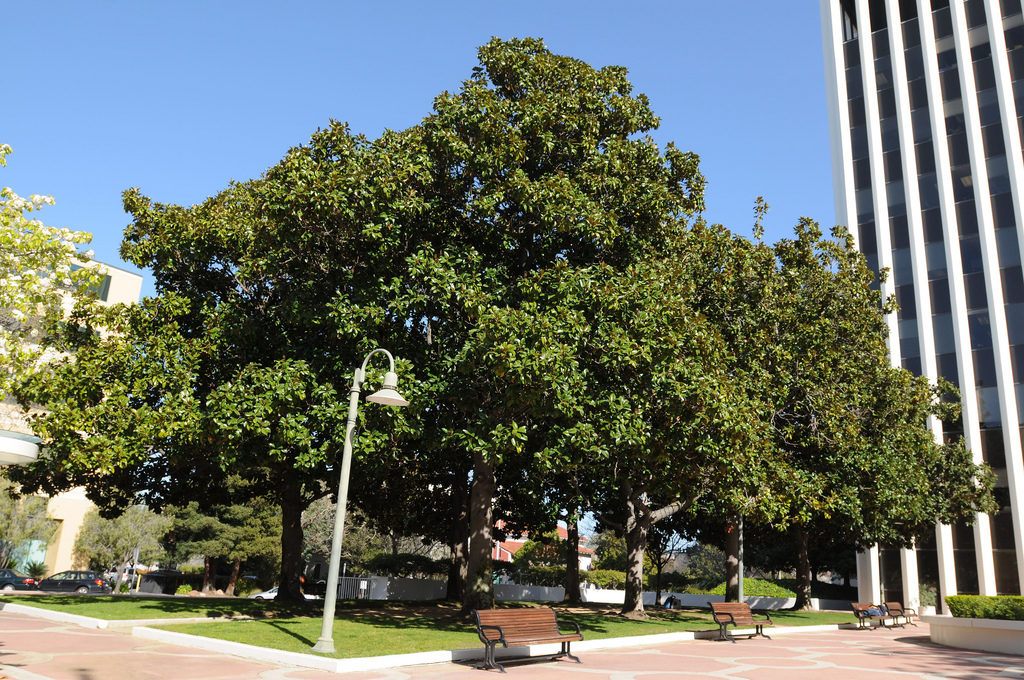- About Us
- Our Work
- Tree Info
- Get Involved
- Blog
- Volunteer
- Support Us
By Canopy Team on April 1, 2019

Tree Spotlight Series: Follow along as we learn about the fascinating trees that live among us. This series is in partnership with Rhee Lab in the Plant Biology Department of the Carnegie Institution for Science.
Other posts in the series: ginkgo biloba, Douglas fir, giant sequoia, Chinese tallow, silver-dollar gum, Monterey pine, green dracaena, coast live oak, cork oak, Japanese maple, silver birch, dawn redwood, Japanese persimmon ‘Hachiya’, carob, California bay, and avocado.
Andrew Jackson, his political career blossoming following his military command during the War of 1812 against Great Britain, finally claims the coveted title of President of the United States in the election of 1828. A few weeks later, Jackson’s wife Rachel dies. Blaming her death on the vicious personal attacks during the campaign questioning the legitimacy of their marriage, Andrew Jackson planted a southern magnolia from his plantation, Rachel’s favorite tree, on the White House grounds.
Since then, the large tree has remained there for nearly 200 years, with its cultural significance only increasing as time passes.
The southern magnolia, or Magnolia grandiflora, was first described by Carl Linneaus, a Swedish scientist who formalized the modern system of naming organisms. The evergreen tree can reach a whopping 120 feet in height, which is about 11 stories. The leaves can grow almost 8 inches long and 5 inches wide.
Its name is a reference to its large flowers, which can grow up to a foot in diameter, have about 6 to 12 petals each, and produce a rose-colored fruit. Although the species can produce its bright red seeds by 10 years of age, seed production peaks at around 25 years of age.
A variety of uses of the southern magnolia have been described, owing to considerable research being done on the species. Most of the uses of the tree are in its lumber, which is quite tough and shock absorbent. The beautiful brown wood has been coveted for making furniture, venetian blinds, and doors. Furthermore, the chemistry of the tree demands considerable attention too.
The tree contains many phenolic constituents – compounds that have hydroxyl groups bonded to aromatic rings. Phenolics such as magnolol and honokiol have been shown to combat fungi and bacteria, including bacteria that are known to cause acne. This trait is tied to the tree’s anti-inflammatory effects, since the same phenolics are used in a traditional Japanese medicine, saiboku-to, that is used to treat asthma.
The southern magnolia has an extensive history and cultural significance in the United States. With its shiny green leaves and fragrant flowers, the tree is a very popular ornamental tree in its native range of from coastal North Carolina to east Texas, where it is usually found on the edges of bodies of water. From this range, the tree has been brought further north to coastal areas of New Jersey, Connecticut, and the outskirts of the Chesapeake Bay.
The southern magnolia is also grown along the west coast, but faces stiff competition from trees that are better adapted to the cooler summer months and forest fires. Locally, the southern magnolia is the single most planted street tree in Palo Alto. The tree can be found on many of Canopy’s Neighborhood Tree Walks, including: Crescent Park, Downtown North, and Southgate.
Owing to its widespread distribution and appeal throughout the United States as well as its presence on the White House grounds, the tree was part of the $20 bill for decades. Over the decades, the tree has been noted for its involvement in many Presidents’ daily lives. For example, Herbert Hoover had breakfast and held Cabinet meetings under its branches. FDR and Churchill often spoke below its shade. Ronald Reagan gifted a cutting of the tree to his Chief of Staff Howard Baker upon his retirement.
If the southern magnolia could speak, what other stories could it have for us? What else has occurred under the branches of a single southern magnolia that would entice us into a wonderful tale about our country’s history? Surely this, if nothing else, demonstrates how fleeting our time is relative to nature: decades of our political history have passed, wars have been waged, social rights have been acquired, our country has made it through turmoil after turmoil, yet the southern magnolia remains.

Ankush Bharadwaj was a 2018 summer intern at the Rhee Lab in the Plant Biology Department of the Carnegie Institution for Science. He is currently an undergraduate student majoring in Microbiology, Immunology, and Molecular Genetics at the University of California, Los Angeles. His hobbies include being outdoors, where he usually spends his time kayaking, hiking, or simply skateboarding around.